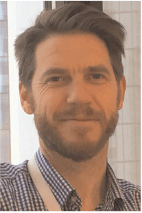Small-scale technology solutions to eliminate flaring
James Brown A , Chiew Yen Law A , Katherine Fielden A , Ceri-Sian Dee A and Neil Pollock ADNV GL.
The APPEA Journal 56(2) 612-612 https://doi.org/10.1071/AJ15118
Published: 2016
Abstract
Five percent of the world’s gas supply is wasted by being flared or vented into the atmosphere, leading to a huge loss of potential revenue, not to mention a significant impact on the environment. This is equivalent to 150 billion cubic metres of natural gas per year and the release of 400 million metric tons of CO2 equivalent.
The industry does this for a variety of valid reasons, including well testing, emergencies, commissioning, maintenance, or simply because an economic solution for capturing and using the gas has not been discovered. Capture of flared gas, therefore, presents an economic and environmentally beneficial opportunity to create new value chains that can benefit not only the industry but also people’s quality of life.
This extended abstract draws on a recent DNV GL project to assess existing and future technologies and concepts for capturing small volumes of associated gas that are normally flared from oil fields, both onshore and offshore. The following four technology options that can be used to capture associated gas, convert it, and either utilise the product onsite or transport it to market for consumption are considered.
-
Using more cost-effective ways of transporting natural gas where there is no existing pipeline.
-
Converting gas into products with a higher economic value through chemical processes.
-
Novel concepts—bringing the solution closer to the source of gas flaring.
-
Other solutions.
The extended abstract then focuses on cost-effective ways of transporting gas, in particular the use of micro-LNG solutions

James Brown is Regional LNG and Gas Consulting Manager in DNV GL’s Singapore office. He has 16 years’ experience in the oil and gas industry, including nine years of operations and engineering experience with BHP Billiton and BG. James was previously a shift team leader at an LNG facility in the UK. In Singapore, James led a number of landmark projects including development of COMAH regulations for Brunei Darussalam, an award-winning safety case and management system for Singapore LNG, and several studies for LNG import and export terminals, LNG fuelled ships, FLNGs, FSRUs, and the world's first LNG carrier that is expected to be converted to FLNG. |

Chiew Yen Law graduated with a BEng (chemical engineering) from the University of Birmingham. She started her career with DNV GL in 2008. She has more than seven years of experience in the oil and gas industry. Her main areas of expertise include techno-economic analysis, gas treatment, process design and operation, process safety, technology qualification, and RAM modelling. She was the project manager for the conceptual study detailed in the extended abstract she co-authored. |

Katherine Fielden has 11 years’ experience in the oil and gas industry as a process engineer and safety consultant, and joined DNV GL in 2011. This has included all aspects of process engineering, including steady-state simulation, concept design studies, front-end engineering design and detailed design, as well as risk studies. Recently, Katherine has been the project manager for the development of the decision support tool. |

Ceri-Sian Dee graduated with a MEng (chemical engineering) from the University of Sheffield. She started her career with DNV GL in April 2014. Working as a process engineer, she has gained experience in steady-state simulation, gas processing and economic modelling. Ceri-Sian has been developing the decision support tool along with Katherine Fielden (co-author). |

Neil Pollock is Operations Manager East Coast, NZ and PNG at DNV GL. |
References
BP, 2015—BP statistical review of world energy 2015. Report published June 2015. London: BP. Accessed 28th April 2016. <http://www.bp.com/content/dam/bp/pdf/energy-economics/statistical-review-2015/bp-statistical-review-of-world-energy-2015-full-report.pdf>.The World Bank, N.D.—Global gas flaring reduction partnership (GGFR). Accessed 28th April 2016. <http://www.worldbank.org/en/programs/gasflaringreduction#1>.


